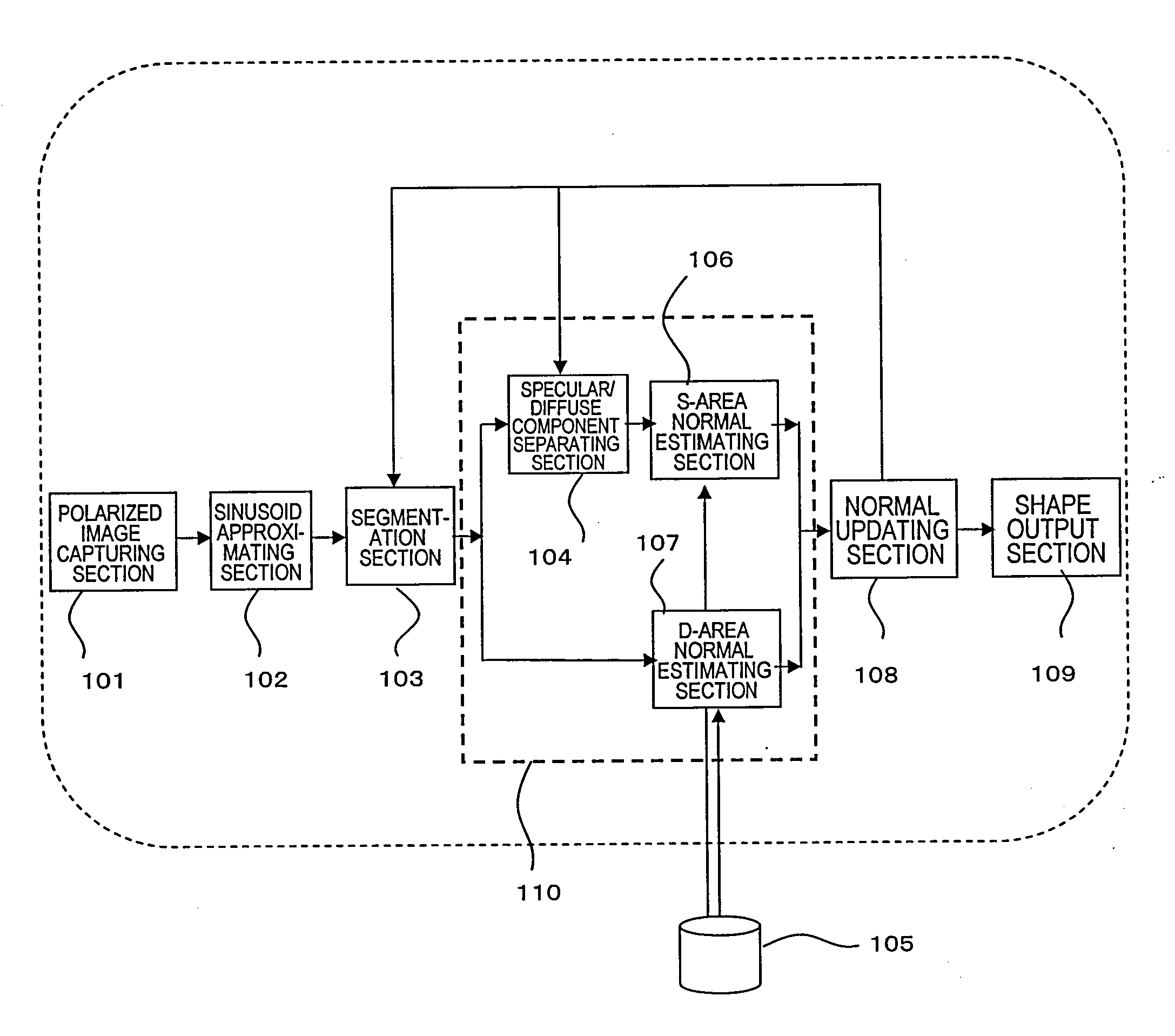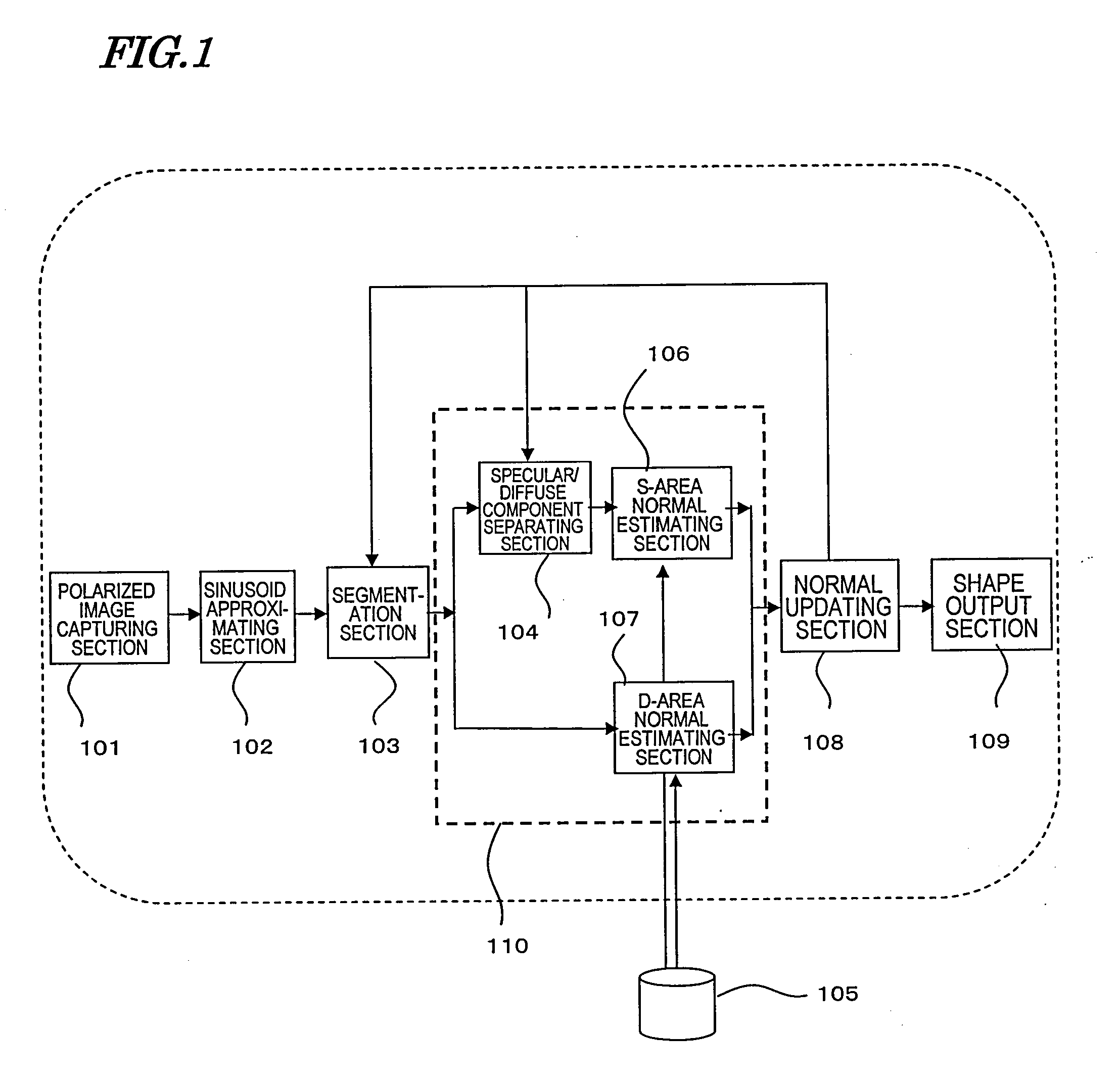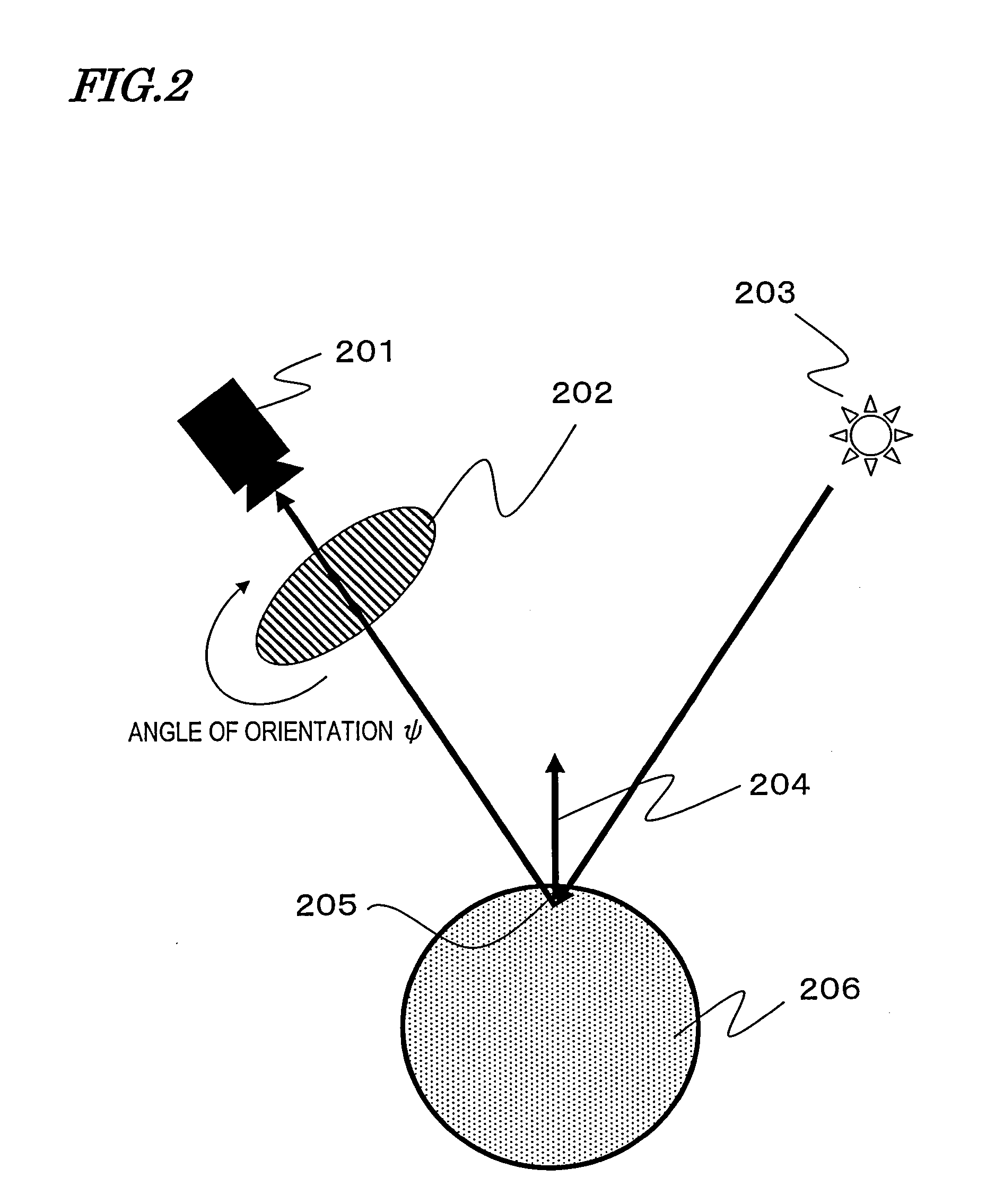System, method and apparatus for image processing and image format
a technology of image processing and image format, applied in the field of image processing methods and equipment, can solve the problems of inability to use sensors or systems, inability to maintain minimum required level, and inability to achieve the minimum required level of information collection,
- Summary
- Abstract
- Description
- Claims
- Application Information
AI Technical Summary
Benefits of technology
Problems solved by technology
Method used
Image
Examples
embodiment 1
[0095]First of all, a first preferred embodiment of an image input apparatus according to the present invention will be described.
[0096]FIG. 1 is a block diagram showing a configuration for an image input apparatus as a first preferred embodiment of the present invention. This image input apparatus includes a polarized image capturing section 101, a sinusoid approximating section 102, a segmentation section 103, a normal estimating section 110, a normal updating section 108, and a shape output section 109. The normal estimating section 110 includes a specular / diffuse component separating section 104, an S-area normal estimating section 106 and a D-area normal estimating section 107. This image input apparatus gets refractive index information from the object's refractive index information database 105, which does not have to form an integral part of this image input apparatus.
[0097]The polarized image capturing section 101 is a device for taking a number of polarized images of the o...
embodiment 2
[0161]Hereinafter, a second preferred embodiment of an image input apparatus according to the present invention will be described.
[0162]First, look at FIG. 18, which is a block diagram illustrating an image input apparatus as a second preferred embodiment of the present invention.
[0163]The image input apparatus of this preferred embodiment is different from the counterpart of the first preferred embodiment described above in that this apparatus further includes a light source output section 1501 and a specular / diffuse reflected image output section 1502. Besides, the continuity evaluating section 1503 also operates differently. However, the other components are basically the same as the ones already described.
[0164]According to this preferred embodiment, not just the shape information of the object but also the angle of the light source that illuminates the object can be obtained. In addition, an image in which the light intensity component of the object has been separated into a sp...
embodiment 3
[0183]FIG. 23 is a block diagram illustrating a third preferred embodiment of an image input apparatus according to the present invention.
[0184]An image input apparatus as the third preferred embodiment of the present invention can process color images. The apparatus of this preferred embodiment can also output information about the object's shape, the angle of the light source that illuminates the object, and a specular reflected image and a diffuse reflected image of the object just like the counterpart of the second preferred embodiment described above.
[0185]The apparatus of this preferred embodiment includes a color polarized image capturing section 2001, a segmentation and adjusting section 2002, a Red processing section 2003, a Green processing section 2004, a Blue processing section 2005, a Red specular / diffuse reflected image output section 2006, a Green specular / diffuse reflected image output section 2007, a Blue specular / diffuse reflected image output section 2008, a norma...
PUM
 Login to View More
Login to View More Abstract
Description
Claims
Application Information
 Login to View More
Login to View More - R&D
- Intellectual Property
- Life Sciences
- Materials
- Tech Scout
- Unparalleled Data Quality
- Higher Quality Content
- 60% Fewer Hallucinations
Browse by: Latest US Patents, China's latest patents, Technical Efficacy Thesaurus, Application Domain, Technology Topic, Popular Technical Reports.
© 2025 PatSnap. All rights reserved.Legal|Privacy policy|Modern Slavery Act Transparency Statement|Sitemap|About US| Contact US: help@patsnap.com



